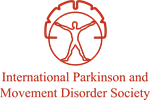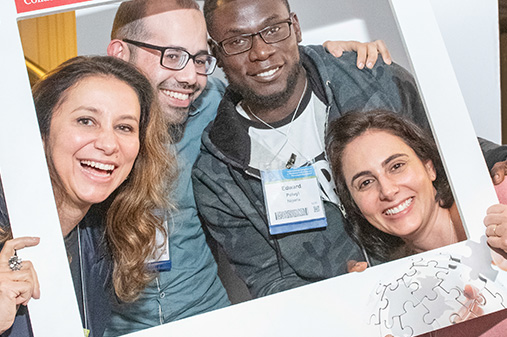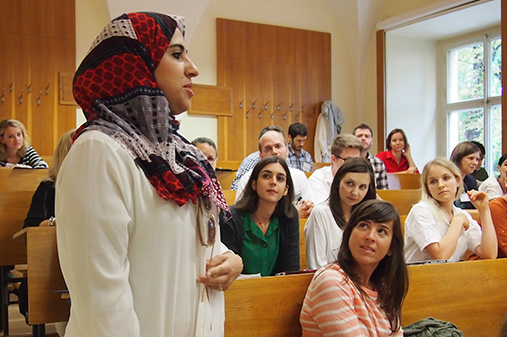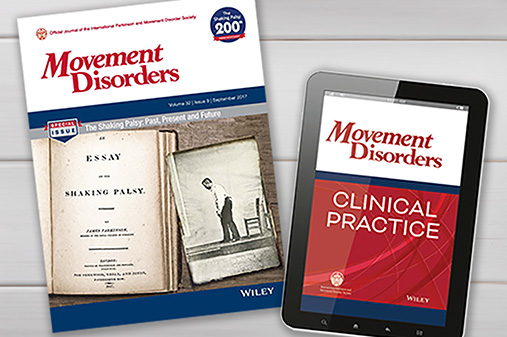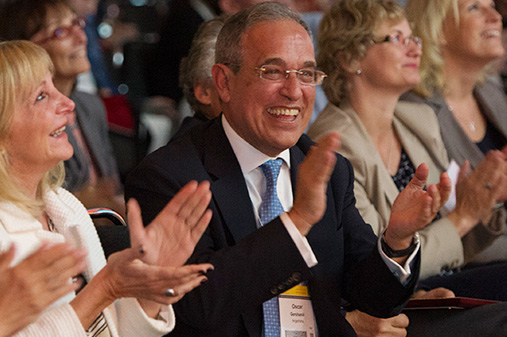Current genetic landscape for movement disorders • 2025 MDS Congress
Dr. Divyani Garg: [00:00:00] Welcome to the MDS Podcast, the official podcast of the International Parkinson and Movement Disorder Society.
View complete transcript
I'm your host, Divyani Garg from All India Institute of Medical Sciences, New Delhi, India. And in today's podcast, I'm very happy to welcome Dr. Gerard Saranza. He's a movement disorders neurologist based in Cebu, Philippines. Welcome to the podcast, Gerard.
Dr. Gerard Saranza: Thank you, Divyani, for having me. It's really a great pleasure and honor to contribute to the MDS podcast.
Dr. Divyani Garg: So today we'll be talking about genetics of movement disorders. What is happening in this field? What has happened in the past, what is upcoming, and what are the challenges that are associated with this particular area in the field of movement disorders. So Gerard, let me begin by asking you: how has our understanding of the genetic basis of movement disorders evolved over the last two decades?
Because this field has seen a huge explosion in the last two decades, but also specifically what has been [00:01:00] the recent updates, let's say in the past one year or so?
Dr. Gerard Saranza: Yep. So there's been a lot of progress and development in the field of neurogenetics for movement disorders. Previously we were focusing on monogenic syndromes, monogenic disorders. But with the advent of next-generation sequencing, we're now trying to get more and more information about different diseases.
We're getting more access even to whole-exome and whole-genome sequencing, and thus we have moved from monogenic to polygenic risk scores, which help us identify new genes that would explain the patient's symptoms. And also there's been a lot of studies as well on gene environment interaction and the different genetic mechanisms underlying different diseases.
Dr. Divyani Garg: So you just spoke about this, but can you outline the current landscape of the monogenic versus the complex genetic contributions to movement disorders?
Dr. Gerard Saranza: We still deal with a lot of monogenic disorders like, for example, Huntington's Disease which show Mendelian inheritance and many different monogenic dystonic [00:02:00] syndromes like DYT1 or the DYT-TOR1A, GCH1. But right now, with the advances in the neurogenetics technologies, we're getting to know more about complex polygenic risks.
Example, for conditions like Parkinson's disease and essential tremor, there's been a lot of overlap in terms of the phenotypes or even one gene showing different phenotypes like, for example, ATP1A3 showing pleiotropy, with different phenotypes manifesting with just one genetic mutation.
Dr. Divyani Garg: And since we have such a large explosion, and you talked about this pleiotropy, what is the role of genetic testing in routine clinical practice?
Dr. Gerard Saranza: Yeah, so there's a common question that we often get from our colleagues and our families. Like, Why do we need to do genetic testing? Many of these disorders don't even have a treatment. But that is a misconception that we have to clarify to our patients.
For one, getting a correct diagnosis would really help in them accepting and understanding, and then moving forward to the [00:03:00] clinical trials that they can be involved with or the different disease-specific treatments that we can offer to them.
Of course there are different indications. We don't do genetic testing to all patients with movement disorders. So for example, having an early-onset, having a history of affected relatives, or having specific symptoms that would suggest a hereditary condition — Those are indications for us to do genetic testing.
And in terms of the choices for the genetic tests, there are different panels that we can offer for dystonia, for example, or for ataxia. But most of the time we can order for whole-exome sequencing or even whole-genome sequencing if we haven't found the answer in whole-exome sequencing.
And once we arrive the diagnosis, even before, there should be genetic counseling. And that is very important. It's something that I must say is something that we haven't utilized as well, especially in lower to middle income countries. With many of the neurologists acting both as a genetic counselor and as a geneticist, we must [00:04:00] counsel them on why we are doing the tests, the interpretation, the results, and the resources that we can offer to them or help them cope with their condition and know the ongoing clinical trials that they can be involved with.
Dr. Divyani Garg: Absolutely, and I think that's a very important point that you've touched on: that many times neurologists double as counselors. So I think that is something that we must learn as part of our therapeutic and counseling armamentarium. So that we can do justice to the
patients.
Dr. Gerard Saranza: Of course, if you're practicing in an area where there are genetic counselors and geneticists, certainly you can work with them. It's always a multidisciplinary care for our patients. We just don't stop at the diagnosis. We offer treatment. There's a very nice review by the team of Prof. Kishore Kumar that was published last year.
They outlined there the different disease-specific treatments that we can offer patients with genetic conditions, not just in terms of drugs or medications, but also for DBS knowing that DBS [00:05:00] can be very helpful for some genetic conditions. There are some that would have some worsening with deep brain stimulation surgery.
Aside from that, dietary modifications, trigger avoidance, those are all something that we can offer as well to our patients.
Dr. Divyani Garg: Absolutely, and I'm glad you brought that up because I wanted to ask you as to how exactly genetic findings impact prognosis and treatment strategies for patients and families because that is very true for specific disorders.
Dr. Gerard Saranza: Yeah, that's certainly correct. There are many times, like for example, when a patient consults in the clinic and they haven't had any diagnosis in the last five or 20 years. And when they learn about their condition, many times they would just be very happy knowing what's going on because it's really very hard for them to cope with a condition and they don't know what's going on.
And with that, giving a name to their diagnosis, they're able to read different resources online or the pamphlet that you can give them, so that they'll know, what is to come in the next five or 10 years and what is expected of their condition. And let's help them [00:06:00] prepare for management and the prognosis of their condition.
Dr. Divyani Garg: That is true because the end of the diagnostic journey is a great milestone most of the times for patients and their families. Going forward, so what are some of the most exciting recent genetic discoveries in movement disorders?
Dr. Gerard Saranza: Yeah. So aside from the identification of new genes, there are so many genes now, about 500 that's been implicated in different movement disorders thanks to the development of next-generation sequencing. And of course with the international collaboration that we have.
I come from a lower- to middle-income country, the Philippines, and it's really quite a challenge for our patients to have access to genetic tests, but thankfully with international collaboration such as the global Parkinson's Genetics Program and the MDS Center to Center Program, we're giving more access to our patients to all these genetic developments. There are many new disease genes uh, new variants that are being discovered. For example, previously it was just considered a variant of unknown significance. But with many [00:07:00] patients having access to these tests, we're able to identify and reclassify these variants from becoming a VUS to a pathogenic one.
Gene therapy has also been a lot of success. For example, for aromatic amino acid, the decarboxylase deficiency or DC, there's been a lot of success in that disorder.
And we're now also having the use of the polygenic risk scores, and also with the MDS gene project, that's also very helpful in helping us determine more and more disorders that's causing our patients symptoms.
Dr. Divyani Garg: Yeah. And on that note, how are these polygenic risk scores and big data approaches being applied in the field?
Dr. Gerard Saranza: So the polygenic risk scores, because previously, we just think that a particular condition is caused by just one genetic mutation. But right now, with the large scale GWAS that's being conducted, we are able to identify novel risks. Although they're not as common compared to the known ones, sometimes the interplay of these different risk, as well as some epigenetic factors, can play a role in [00:08:00] terms of when a disease would start in terms of the symptoms, the prognosis and what are the particular challenges that would be seen in that condition. There are now a lot of polygenic risk scores that we can use to help, for example, predict the onset, the progression, as well as identify populations at risk.
Dr. Divyani Garg: So what are the current challenges in moving from gene discovery, which has really been explosive to therapeutic targets?
Because there seems to be a kind of a mismatch there.
Dr. Gerard Saranza: Yeah. Although there have been a lot of advances in the field of neurogenetics, there's still a lot of challenges that we have to deal with. For one, in terms of patient care, respecting their autonomy if they want to know or they don't want to know. There's what we call the right not to know their particular condition.
Of course, the need for pre- and post-genetic counseling is something that's not being utilized in many areas and parts of the world. There was a very nice paper published by professor Gato and her team, in Rare Neurologic Diseases, and it's really interesting to [00:09:00] note that in all regions of the world, more than 50% don't have good access to genetic tests. Even in well-developed countries, there's really a lack of geneticists and genetic counselors, and even all these tests that are available supposedly for many of our patients.
Also in terms of the treatment, as well as the psychosocial factors that we have to deal with. Oftentimes when we give them a genetic disease, aside from giving a relief that they now have a name to their condition, it would also give them a sense of anxiety, knowing that if their disease doesn't have any known particular treatment or definitive cure, that can certainly cause anxiety to the patient or the loss of hope.
And that's something that we also have to help them cope with in terms of the psychological aspects.
Protections for privacy and against discrimination gladly. In many countries there are, for example, the genetics Information Non-Discrimination Act, or the GINA, in the US, but in my country, in the Philippines, we don't have a specific one for genetics, but we [00:10:00] have the Data Privacy Act that would help protect our patients with genetic disorders.
Dr. Divyani Garg: What are some of the ethical and psychosocial challenges that surround predictive genetic testing for movement disorders?
Dr. Gerard Saranza: Yeah, that's really a very valid and good question, Divyani. Predictive testing is something that is a topic that we have to deal with. In fact, that's one of the topics that's been going to be discussed here at the MDS Congress . Certainly, there are times when you really want to offer genetic testing for the populations at risk, especially if there's something that you can do that's what we call an actionable treatment for a particular genetic condition. But for a pediatric patient with a family member affected with an adult-onset disease, there's a lot of ethics behind that.
Generally, we don't recommend doing genetic tests for pediatric patients with adult-onset diseases unless there's something that you can do or you can intervene to help prevent or minimize their risk of having severe symptoms.
Dr. Divyani Garg: So that's very important [00:11:00] point. And where do you see this field heading to, in the next five to 10 years? What can we expect? What is gonna happen?
Dr. Gerard Saranza: I'm very hopeful that there will be a lot of more and more developments in the field of neurogenetics in terms of having breakthroughs in the diagnosis, sequencing, as, as well as integrated omics, and polygenic risk scores-based predictions, as well as expanded gene therapies. I think the field of neurogenetics is going to really advance, especially with the collaboration of the different centers.
But what I'm most hopeful with is that hopefully in the next five or 10 years, or in our lifetime, I would say that we can offer a lot of disease-specific therapies for many of our patients afflicted with genetic disorders.
And lastly I also really hope that these advances would also be made available to lower- to middle-income countries. Equity and global access is something that we also have to help alleviate that particular aspect that hopefully even [00:12:00] patients coming from these underserved areas will have access to the diagnostics as well as the genetic therapies that we can offer to patients in well-developed countries.
Dr. Divyani Garg: And on those notes of hope, thank you, Gerard, so much for joining me here today. It was a pleasure to converse with you.
Dr. Gerard Saranza: Thank you. Thank you, Divyani. It's really a pleasure and an honor to be part of the MDS podcast.

Gerard Saranza, MD
Chong Hua Hospital
Cebu, Philippines
